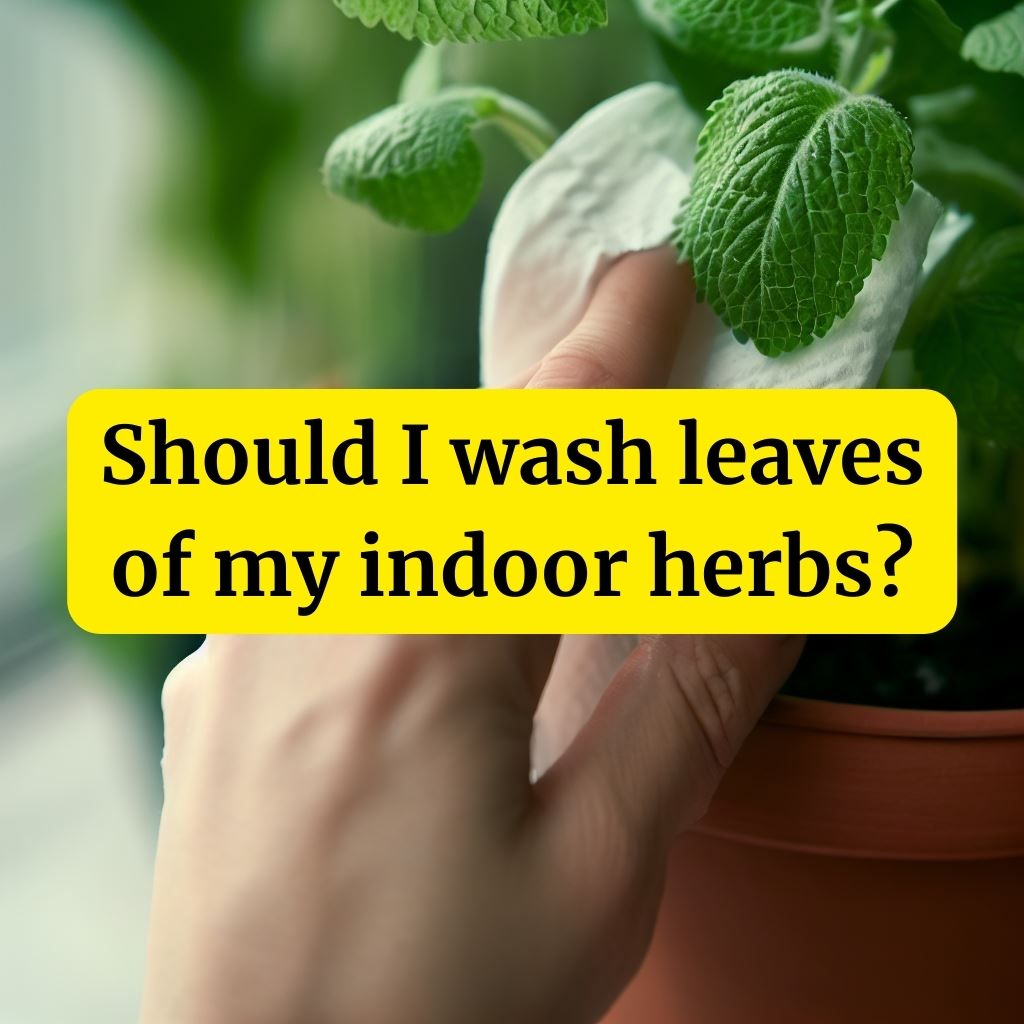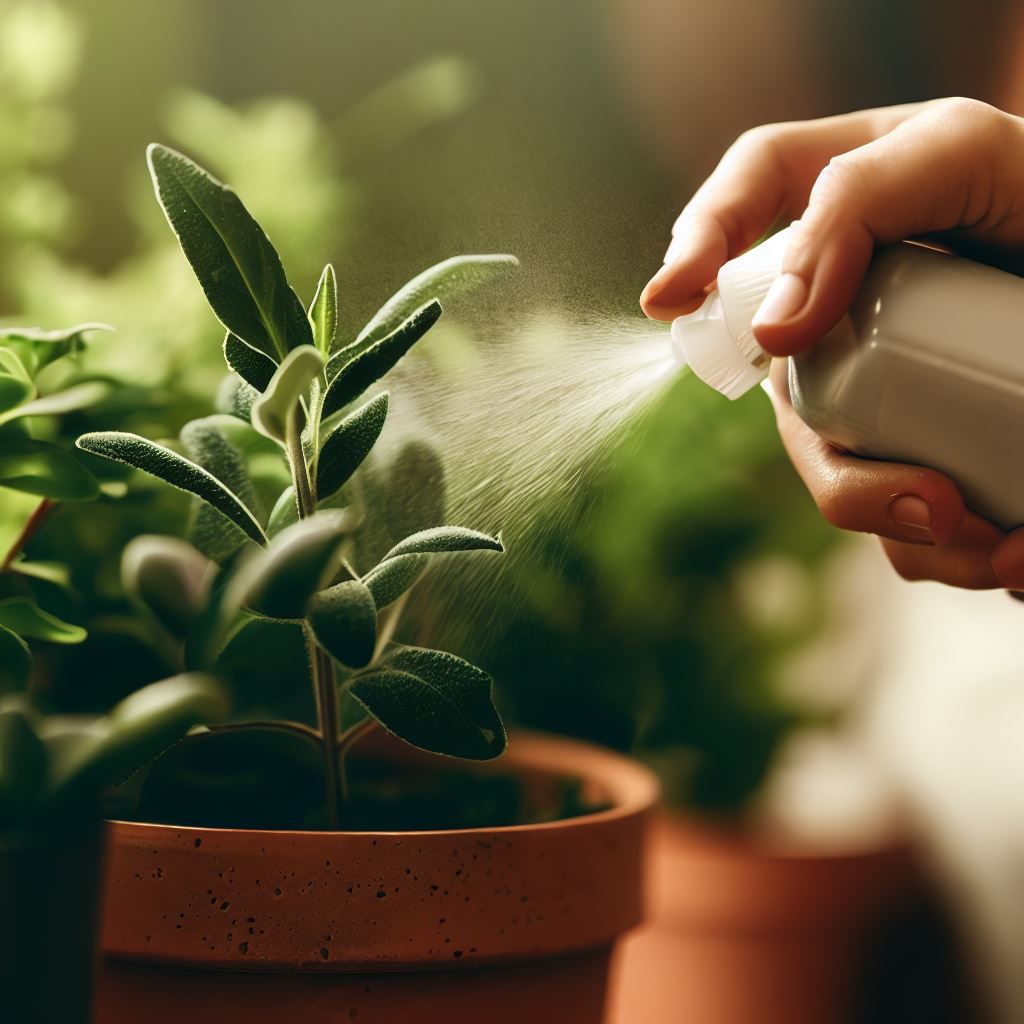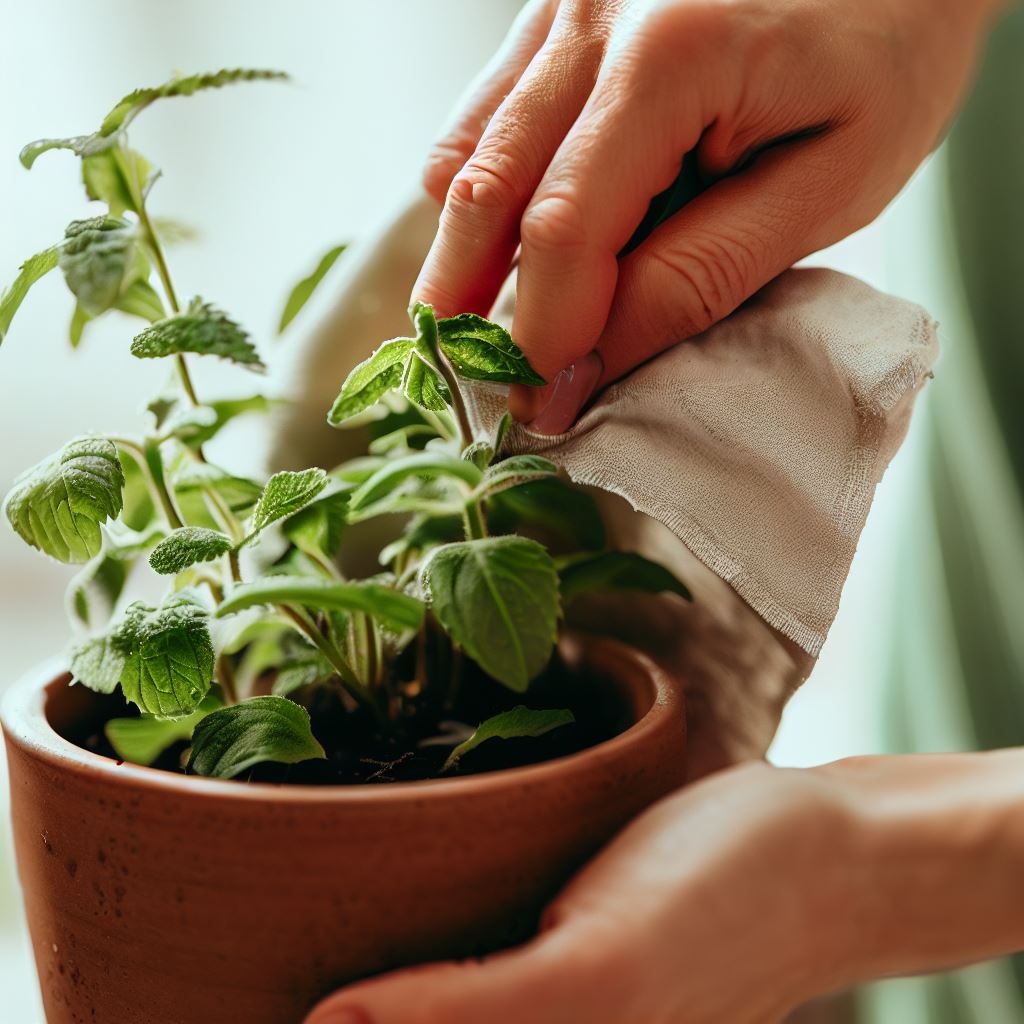
Keeping your indoor herb garden clean is essential for healthy growth and pest prevention. In this article, we’ll share tips and techniques for washing the leaves of your indoor herb garden to keep them free from pests and debris.
In this article
Washing Your Herb Plants to Remove Pests
Pests are the bane of every gardener’s existence. When you’re growing herbs indoors, the last thing you want is to find these unwanted guests on your prized plants. Pests not only have a knack for damaging your herbs but can also spread their mischief to other green inhabitants in your home.
So, let’s get to the root of the matter – why should you consider washing your indoor herbs? Beyond just evicting these garden pests, washing helps eliminate their eggs and larvae, ensuring that your herbs remain healthy and vibrant.
Inspect Your Herbs Regularly
Set a routine: Creating a schedule for inspecting your plants is like giving them a wellness check-up. Aim for at least once a week to establish a habit of vigilant herb care. This routine ensures you can quickly spot any signs of pests or other issues.
Examine the entire plant: When conducting your inspections, don’t leave any leaf unturned. Take a thorough look at every part of the plant, including the leaves, stems, and even the soil. Pests have a knack for hiding in unexpected corners, so be meticulous in your examination.
Use a magnifying glass: Some pests are masters of disguise, making them virtually invisible to the naked eye. In such cases, a magnifying glass becomes your trusty detective tool, revealing tiny insects or mites that may have taken up residence on your herbs.
Check the undersides of leaves: Pests often seek refuge on the underside of leaves, believing they’ve found the perfect hiding spot. Lift and examine the bottom of each leaf diligently, searching for any signs of pests, eggs, or larvae, as well as any telltale damage or discoloration.
Look for common pest signs: It pays to know your enemy. Familiarize yourself with the common pests that afflict indoor herb gardens and the telltale signs they leave behind. For instance, aphids leave a sticky residue known as honeydew, which can lead to the growth of sooty mould. Spider mites leave fine webbing in their wake, while whiteflies prefer to congregate on the undersides of leaves.
Monitor plant health: In addition to pest patrols, inspect the overall health of your plants. Keep an eye out for signs of nutrient deficiencies, overwatering, or diseases that may weaken your herbs and make them more susceptible to pests.
Keep a log: If you’re the organized type, consider maintaining a log of your herb inspections. This simple practice helps you track any changes or trends in your indoor herb garden’s health, making it easier to detect and address potential problems promptly.
By following these tips and consistently inspecting your plants, you’ll be equipped to identify and tackle any pest issues early on, ensuring your indoor herb garden remains a flourishing haven of greenery.
Creating A Mild Wash Solution
Now that you’ve become a pest detective, let’s discuss the crucial step of washing your herb plants to evict these uninvited guests. Before you reach for the soap, it’s essential to prepare a gentle wash solution that effectively removes pests without harming your delicate herbs. Using harsh chemicals or detergents could spell disaster for your beloved green companions, and we certainly don’t want that.
Here’s how to create a gentle and effective wash solution for your indoor herb garden:
Choose a Mild Soap: When selecting a soap, opt for a gentle, fragrance-free dish soap or liquid castile soap. These varieties are less likely to contain harsh chemicals or additives that could harm your plants or pose risks when consuming your herbs. Steer clear of antibacterial soaps or detergents, as they may prove too potent for your herb buddies.
Dilute the Soap: Now, let’s get mixing. In a bowl or bucket of lukewarm water, add a few drops of your chosen soap. The exact amount will depend on your container’s size and water quantity, but a good rule of thumb is about one teaspoon of soap per gallon of water. Your solution should be sudsy but not overly soapy – we’re pampering your herbs, not giving them a bubble bath!
Add Optional Ingredients: Some gardeners like to give their wash solution an extra boost. Consider these optional ingredients to deter pests and enhance the effectiveness of your soap:
- Neem Oil: A few drops of neem oil can provide an additional layer of pest control. Neem oil is a natural insecticide that helps repel and control various pests.
- White Vinegar: To tackle sticky residues left behind by aphids or mealybugs, add a tablespoon of white vinegar per gallon of water.
- Essential Oils: Essential oils like lavender, peppermint, or eucalyptus not only deter pests but also infuse your wash solution with a delightful scent. Ensure you use pure, high-quality essential oils and avoid any that might be toxic to your plants.
Test the Solution: Before you dive headfirst into washing your entire herb plant, conduct a little test. Apply the wash solution to a small, inconspicuous area of the plant first. This precaution ensures that the solution is gentle enough and won’t cause any adverse reactions, such as leaf burn or discoloration.
By carefully crafting a gentle wash solution, you can effectively bid adieu to those unwelcome herb invaders while preserving the health and safety of your herbs for future culinary adventures. Remember, after washing, rinse your plants thoroughly to remove any residual soap or additional ingredients used in the solution.
How to Clean Your Indoor Houseplants
Maintaining clean, pest-free herbs isn’t just about washing. Your indoor herb garden is part of a larger family of houseplants, and they deserve some TLC too. Let’s explore some handy tips for keeping all your houseplants in tiptop shape:
Rinse the Leaves Regularly: Prevention is the best medicine when it comes to keeping your plants clean. Give your herb’s leaves a regular rinse with lukewarm water. Avoid cold water, which can leave unsightly spots on the leaves and shock the roots. Remember, these houseplants are tropical at heart and appreciate a warm, gentle touch.

- For Small Houseplants: Place your petite plants in the kitchen sink and shower them down with your kitchen faucet’s sprayer. If you don’t have a sprayer, a trusty spray bottle will do the trick.
- For Larger Houseplants: These leafy giants deserve a spa day too. Pop them into your shower and extendable shower heads are a real blessing here. After their rinse, let them drip dry before returning them to their cozy spots.

Wipe Large Houseplant Leaves: For houseplants with broad leaves, such as peace lilies, a gentle wipe-down can work wonders. Remove dust buildup by carefully wiping the leaves with a cloth moistened in lukewarm water. Use a smooth cloth, like an old tee shirt, to avoid any potential abrasions to the delicate leaves. While doing this, lend support to the leaves and stems with your free hand to prevent any unintentional breakage due to excessive pressure.
Taking these steps will not only keep your herb plants pest-free but also ensure that your entire indoor plant family thrives in a clean and nurturing environment.
Correct Washing Method
- Choose the Right Time: Timing is everything. Opt for a time when your herb plants are free from direct sunlight and not too hot. Early morning or late afternoon is often ideal.
- Prepare Your Herb: Before you start, give your herb plants a once-over. Remove any dead or yellowing leaves and prune any overgrown stems. This not only tidies up your herb but also enhances air circulation.
- Use a Spray Bottle: Instead of immersing your herbs in water, consider using a spray bottle. A gentle misting can effectively dislodge pests without subjecting your herbs to a full-on soak.
- Target Problem Areas: Focus your attention on areas where pests tend to congregate. Remember to check the undersides of leaves and the junctions between stems and leaves, as these are common hiding spots.
- Gently Rub the Leaves: For stubborn pests, a gentle rub with your fingers or a soft cloth can help dislodge them. Be delicate, though, as you don’t want to harm your herbs in the process.
- Rinse Thoroughly: After the pest-removal operation, it’s time for a thorough rinse. Use lukewarm water to wash away any remaining soap, insects, or debris. Ensure that your herbs are completely clean before returning them to their cozy indoor garden.
By following these steps and showing your herbs a little extra love and care, you’ll maintain a thriving indoor herb garden that’s free from pests and ready to elevate your culinary adventures to new heights.
So, the next time you spot a few uninvited guests on your basil or mint, don’t panic. Instead, channel your inner pest detective, prepare a mild wash solution, and gently cleanse your herbs back to their vibrant, aromatic best. Your indoor herb garden will thank you with lush growth and flavors that will elevate your culinary creations to new heights.







